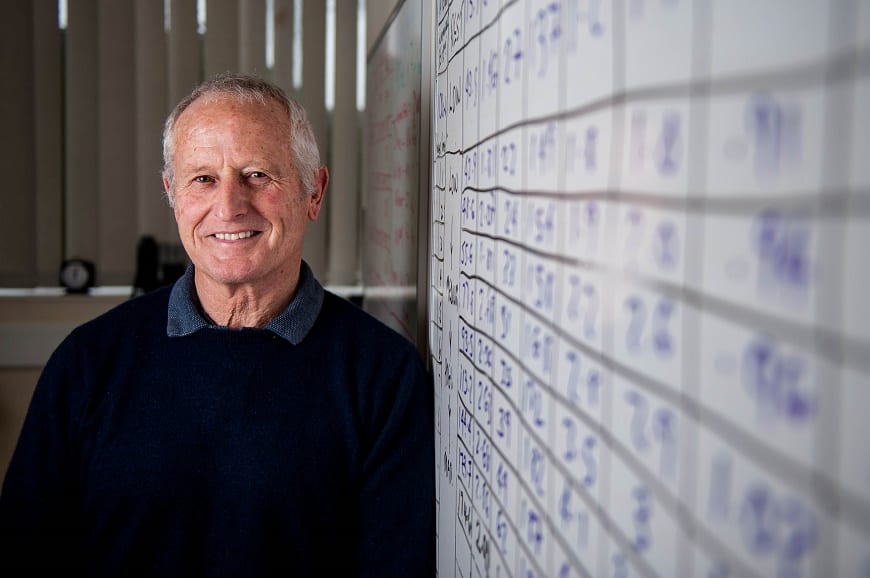With the majority of the population in Wales still at home, many are using this time to improve their health and fitness.
Here, Dr Peter Herbert, a Physiologist at the University of Wales Trinity Saint David and a leading authority on fitness in the older generation discusses why it’s the middle aged or elderly that will benefit the most from leading a more active lifestyle.
If any good comes from this pandemic it will be highlighting the importance of physical activity. In 2015, my research colleagues and I, presented four scientific papers from my work with elderly people, presented at the American College of Sports Medicine’s World Conference in San Diego. These papers provided the evidence how older people can benefit from exercise programmes that take less time to complete than traditional, longer duration programmes and achieve greater fitness and health benefits.
The findings of the study received a massive amount of publicity proving the interest and appetite for learning more about the health and fitness of our ageing population. This led to me establishing the Centre of Health and Ageing at the University of Wales Trinity Saint David in 2016 has enabled many people from mainly the local community, to benefit from regular exercise both physically and positive lifestyle changes.
Since the Coronavirus changed our lives back in the UK in March, I am now seeing more people walking, jogging or cycling during the lockdown – many of whom are often new to exercise. What I hope, is that the physical and mental benefits they’re starting to enjoy, will encourage them to continue to exercise once the constraints of the pandemic are over.
I need to point out that this podcast is aimed at the over 40’s and I am using that age as an indicator of when health and fitness often declines and illnesses become more prevalent.
The facts are that exercise can significantly improve health and enables a more active lifestyle – and it is usually the middle aged or elderly that will benefit the most. There is irrefutable evidence of the effectiveness of regular physical activity in the prevention of several chronic diseases. These include; cardiovascular disease, diabetes, cancer, high blood pressure, obesity, depression, osteoporosis and premature death. This good news is further enhanced by the linear relationship between physical activity and health status, meaning any increase in physical activity and fitness will lead to additional improvements in health.
Almost daily I get asked by people who desperately want to become more active, what exercise should they be doing and how much. My first response would always be “Check with your doctor to find out if you are well enough to do so.”
Before any start can be made let’s make sure we know exactly what types of fitness should be included in an exercise regime. The two most important are aerobic capacity, also known as cardiovascular fitness or CV, and muscle strength.
I’ll talk about CV first. This is exercise that can maintain and improve the efficiency of your heart and lungs.
Unfortunately, for those beginning exercise for the first time there is a lack of straight forward guidance on what type of exercise to take, how long should it last and how hard to push themselves.
If you regard yourself as extremely unfit then walking is a good place to start. Make sure you have comfortable shoes, ideally training shoes and a fairly flat route. The speed you walk should be ‘casual’ and does not make you breathless. No more than 20 minutes. Your feelings when arriving home will give you a good indication of how to approach your next walk. If you found it extremely easy you can make things a little harder the next time by making ONE of the following changes. You either slightly increase the speed of walking, or walk further, or include some small hills. Any one of these will cause your breathing rate to increase, meaning your heart is having to work harder and therefore get stronger. These will all be great indicators of how your fitness is improving. In time when you are able get more out of breath, but still be able to hold a conversation you could introduce what we call interval training. Try walking casually for 4 minutes, briskly for 1 minute which will get you breathing more heavily, then casually for 4 minutes and so on. This will raise your heart rate followed by some minutes of recovery, then speed the walk up for another higher intensity effort. This can be continued a number of times, depending on your fitness.
Should you be starting to exercise, and already having some degree of fitness you might want to begin by jogging.
Exactly the same progression principles apply; gradually raising the intensity of the exercise by increasing the speed, the distance or hills. Initially, you will get some muscle soreness, or stiffness but this will disappear after a few days
There is a possibility that jogging, and maybe even walking does not suit you due to arthritic aching knees that do not take kindly to repeated foot impacts.
If jogging is not for you cycling could be the answer. The downside is that you might have to buy a bike! The upside is there is no repetitive impact, so less aching after exercise; you can travel further and you will usually recover more quickly after cycling than a long run. Again, the same principles apply. Intensity, which means increasing the speed, how long your session lasts and how difficult is the route.
All of these forms of exercise will cause the heart rate to increase, raise the body’s metabolism and cause it to use more calories. Provided you do not eat any more than you usually do you will lose body fat. The greater the intensity of the exercise up to a moderate level is excellent for weight loss. But remember, this does not always come easy. The slower you walk or jog the fewer calories used, so to get a higher calorific expenditure you need increase the length of the session. An important reward from losing weight, particularly body fat, is it has a remarkable effect on general health, and activities will get easier. It can decrease the risk of heart problems, it can lower your blood pressure, and lower your cholesterol levels. Reversing type 2 diabetes is possible, but it requires meal planning, healthy eating, and regular exercise.
The second and other very important aspect of fitness is muscle strength. I should point out that there are many people that already have good strength because of the physical nature of their work, and it would be less important for them to use this type of training. Should they stop working, it can be substituted by resistance training. If we don’t use our muscles, they will weaken, very quickly. This, combined with ageing, is called sarcopenia.
The benefits of maintaining body strength is it enables us to continue to perform tasks that would not be possible with weakened muscles. As we age these strength improvements can provide greater independence and improved quality of life. Muscle losses which are almost always caused by lack of use, can be delayed and often reversed by resistance training. The most common method of exercising muscles, but not the only one, is weight training. This usually means going to the gym.
If that is what you prefer, you should insist on getting qualified advice on how to use the weights and perform the correct exercises. If the gym is not for you, you might want to train at home, and there are a number of exercises, such as press ups, sit ups, leg squats, arm curls that can achieve significant improvements in strength and muscle mass.
For more information on how to perform any of these exercises you can go to www.physicalliteracy.cymru and click on the Centre of Health and Ageing’s page.
The Centre for Health and Ageing provides the opportunity for all members of the community in South West Wales who are over 50 years of age to have access to personalised exercise programmes and one-to-one expert advice on aspects of health, fitness nutrition and lifestyle.
Before current restrictions, we ran regular classes throughout the year and have now started producing online videos to support exercising at home. Remember, before commencing any fitness routine, please consult your doctor. Our programmes support and improve quality of life by addressing the unique needs relating to physical activity in middle and later life, ensuring that each of us can enjoy active healthy lives throughout the life-course.
Listen to Dr Peter Herbert delivering this piece as part of UWTSD’s Perspectives podcast series on the Perspectives page as well as on Spotify Apple, iheart, Deezer, Google, Castbox and Podchaser.









Leave a Reply
View Comments